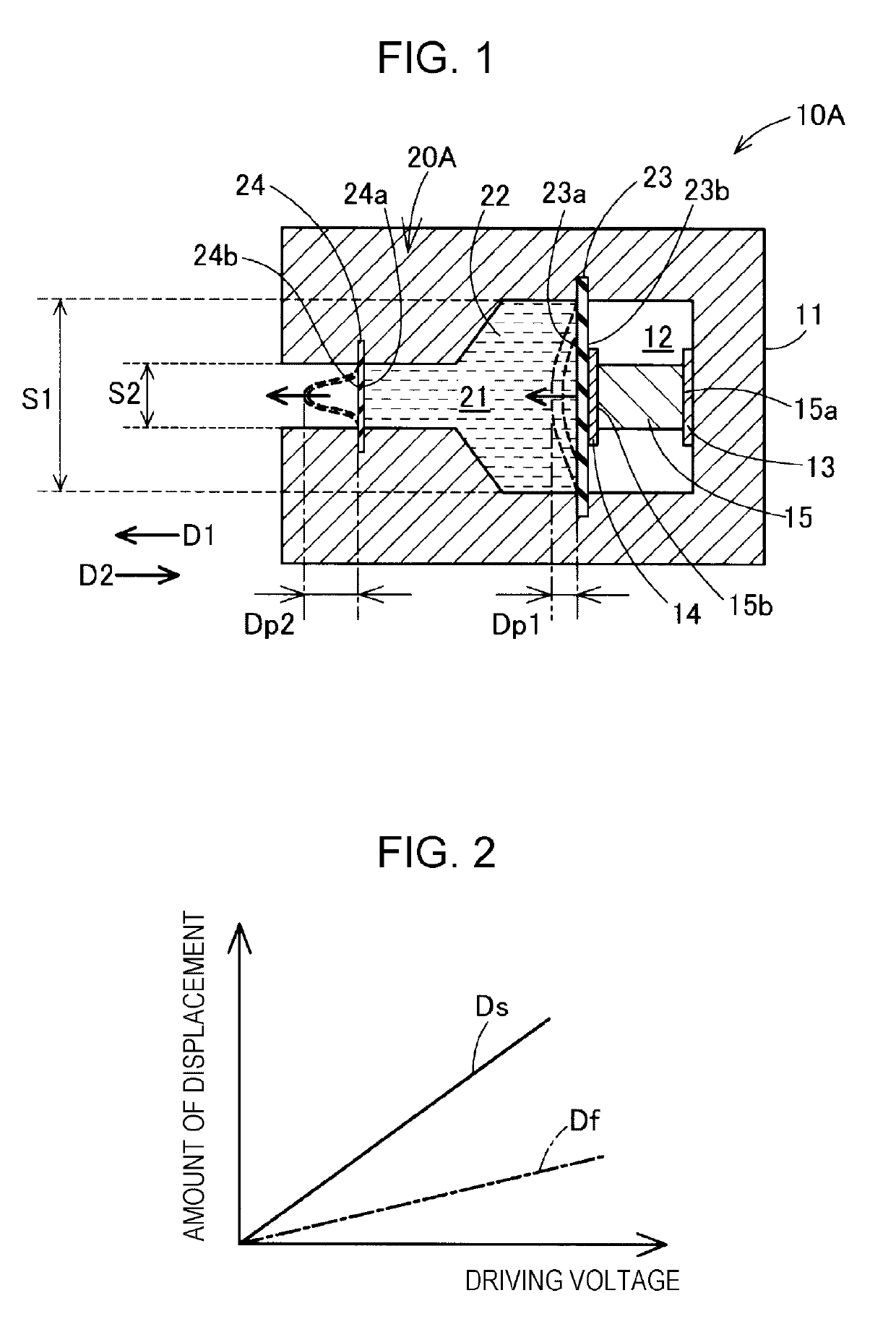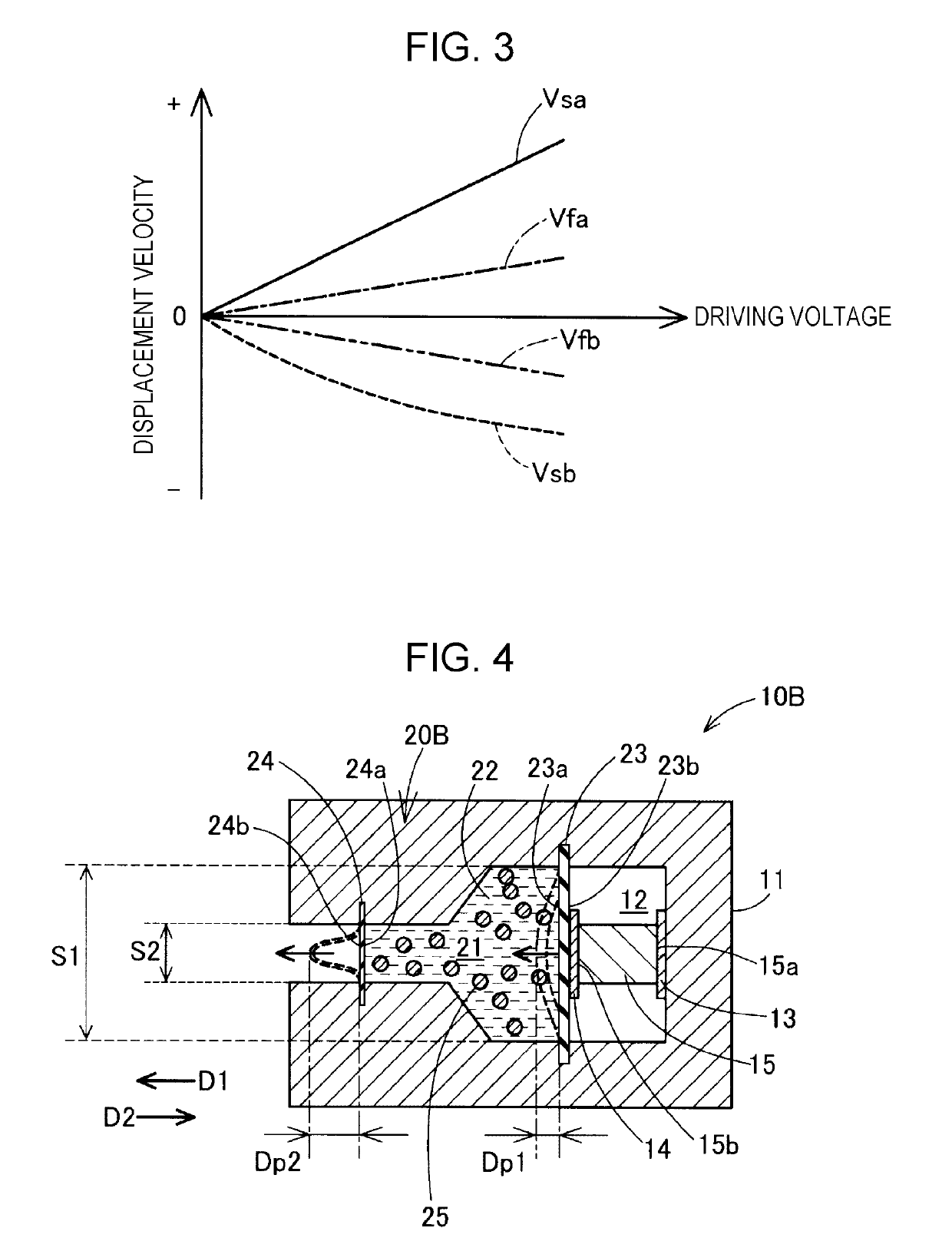Displacement amplifying mechanism and liquid ejecting apparatus using the same
- Summary
- Abstract
- Description
- Claims
- Application Information
AI Technical Summary
Benefits of technology
Problems solved by technology
Method used
Image
Examples
third embodiment
3. Third Embodiment
[0093]FIG. 5 is a schematic block diagram showing an overall configuration of a liquid ejecting apparatus 100C according to a third embodiment. The liquid ejecting apparatus 100C is provided with a head portion 30C provided with an displacement amplifying mechanism 20C of the third embodiment, a control portion 101, and a supply portion 110.
[0094]The head portion 30C ejects an ejection liquid DL using the displacement amplifying mechanism 20C of the third embodiment. The ejection liquid DL is, for example, ink having a predetermined viscosity. The operation of the head portion 30C is controlled by the control portion 101. The configuration of the head portion 30C and the configuration of the displacement amplifying mechanism 20C of the third embodiment will be described later.
[0095]The control portion 101 is configured as a computer provided with a CPU and a memory, and realizes various functions for controlling the liquid ejecting apparatus 100C by the CPU readin...
fourth embodiment
4. Fourth Embodiment
[0112]With reference to FIG. 7, the configuration of an displacement amplifying mechanism 20D and a liquid ejecting apparatus 100D provided therewith in a fourth embodiment will be described. FIG. 7 is a schematic cross-sectional view showing an internal configuration of a head portion 30D according to the fourth embodiment. The configuration of the liquid ejecting apparatus 100D of the fourth embodiment is substantially the same as that of the liquid ejecting apparatus 100C of the third embodiment except that the head portion 30D of the fourth embodiment is provided instead of the head portion 30C of the third embodiment. The configuration of the head portion 30D of the fourth embodiment is substantially the same as that of the head portion 30C of the third embodiment except that the displacement amplifying mechanism 20D of the fourth embodiment in which a portion of the configuration is different from the displacement amplifying mechanism 20C of the third embod...
fifth embodiment
5. Fifth Embodiment
[0122]With reference to FIG. 8, the configuration of an displacement amplifying mechanism 20E and a liquid ejecting apparatus 100E provided therewith in a fifth embodiment will be described. FIG. 8 is a schematic cross-sectional view showing an internal configuration of a head portion 30E according to the fifth embodiment. The configuration of the liquid ejecting apparatus 100E of the fifth embodiment is substantially the same as that of the liquid ejecting apparatus 100D of the fourth embodiment except that the head portion 30E of the fifth embodiment is provided instead of the head portion 30D of the fourth embodiment. The configuration of the head portion 30E of the fifth embodiment is substantially the same as that of the head portion 30D of the fourth embodiment except that the displacement amplifying mechanism 20E of the fifth embodiment in which a portion of the configuration is different from the displacement amplifying mechanism 20D of the fourth embodime...
PUM
 Login to View More
Login to View More Abstract
Description
Claims
Application Information
 Login to View More
Login to View More - R&D
- Intellectual Property
- Life Sciences
- Materials
- Tech Scout
- Unparalleled Data Quality
- Higher Quality Content
- 60% Fewer Hallucinations
Browse by: Latest US Patents, China's latest patents, Technical Efficacy Thesaurus, Application Domain, Technology Topic, Popular Technical Reports.
© 2025 PatSnap. All rights reserved.Legal|Privacy policy|Modern Slavery Act Transparency Statement|Sitemap|About US| Contact US: help@patsnap.com



